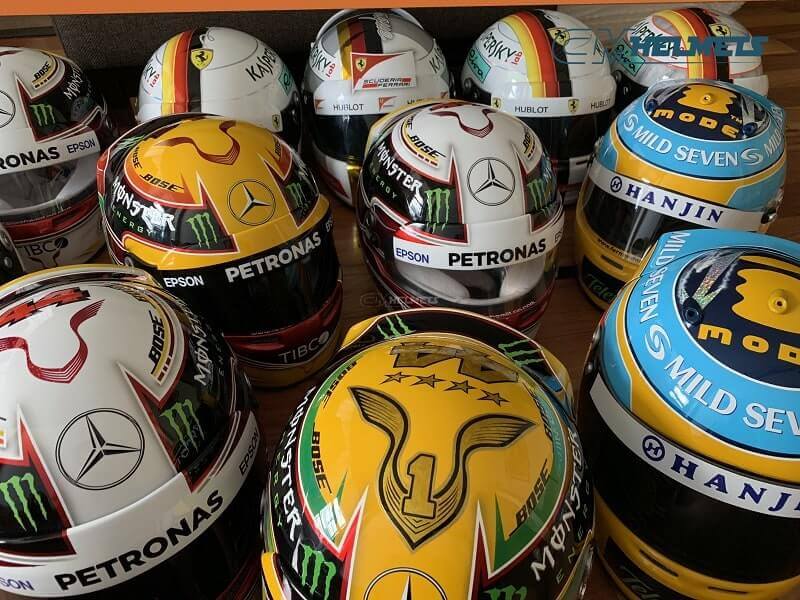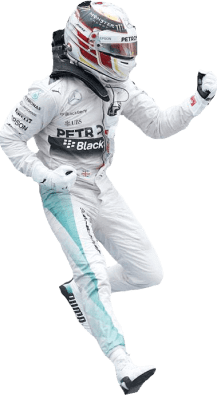Formula 1 helmets are surely the most essential tool a driver could have in order to enhance safety on the track. Now, it would be unimaginable to race with a helmet that does not meet all the right criteria to preserve a drivers’ integrity inside the cockpit. However, that situation hasn’t always been the same in F1, as the devices have been in constant evolution since the early days of motor racing and the start of the World Drivers’ Championship.
In this article, we will take a brief, but informative look at how helmets have evolved since the early days of Formula 1 racing, not only in terms of safety, materials, and so on, but also regarding the designs and how drivers started using helmet colors in order to generate an identity on the track.
In the first few years of the series, Formula 1 drivers were not required to wear helmets. The World Championship of Drivers started officially in 1950, but it was only n 1952 that helmets were made mandatory. Drivers wore leather caps and goggles at the beginning of the championship and started using cork-based helmets in 1952.
The safety devices continued to evolve in Formula 1, and visors started to appear, while the 1960s delivered the first full-face helmet, with American driver Dan Gurney becoming the first Formula 1 racer to wear a full-face head safety device during a World Championship race. Gurney wore a full-face helmet in the 1968 German Grand Prix at the Nürburgring while driving an Eagle T1G with a V12 Weslake engine.
Gurney finished the race in ninth, but his legacy regarding safety still remains. (he was also the first driver to spray champagne during a motor racing podium, at the 1967 24 Hours of Le Mans, another big part of his racing legacy).
Moreover, with the start of the full-face helmets and they becoming essential entering the 1970s, now it was time to start improving shell materials and the inside part of the device needing to be developed in order to increase protection. The 1970s and the full-face helmets started to give us the first few custom designs from each driver, with iconic designs from that era still being well remembered by fans, such as helmets from three-time World Champions Jackie Stewart and Niki Lauda, or James Hunt’s great black design, and the iconic helmet of Gilles Villeneuve.
Later, in the 1980s, we had iconic designs from World Champions Keke Rosberg, Nelson Piquet, Alain Prost, Ayrton Senna and Nigel Mansell, and also Grand-Prix winners like Elio De Angelis and Carlos Reutemann. At that point, the helmets were made of fiberglass, until the material was replaced by carbon fiber in 2001, with Kevlar and innumerable other tweaks in order to keep the drivers more and more comfortable and protected while wearing their head devices.
Also, the HANS device (Head and Neck Support device) was introduced in Formula 1 in 2003, to prevent basilar skull fractures and other head and neck trauma, which had been the cause of death for many drivers in the past of motor racing, including NASCAR legend Dale Earnhardt in 2001. The device was created by Dr. Bob Hubbard in the 1980s, but came into true recognition in the early 2000s and is now widely required among racing series in the world.
In the 21st century, drivers wearing very different designs of helmets became a big thing, with Michael Schumacher leaving behind his white helmet from the 1990s to start wearing a red one in 2000, and multiple champions like Lewis Hamilton and Sebastian Vettel also wearing special helmets quite constantly, especially Vettel.
Current helmets are still being developed to make them even better for the drivers, and there are always small tweaks being added to protect the racers and keep tragedies away from such a dangerous activity.


